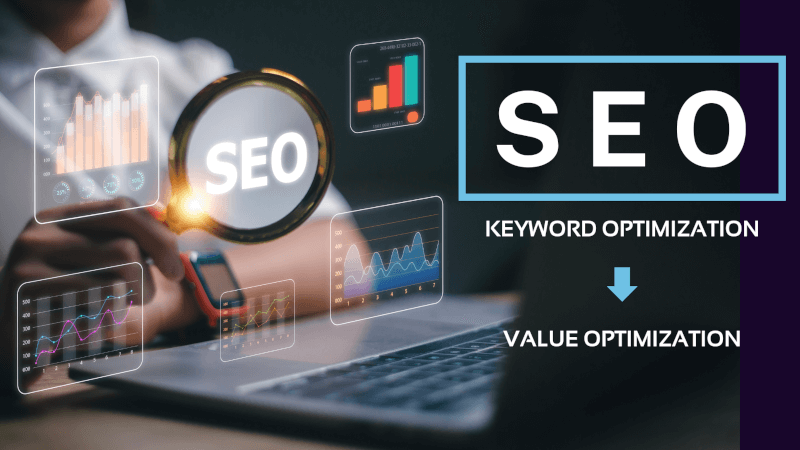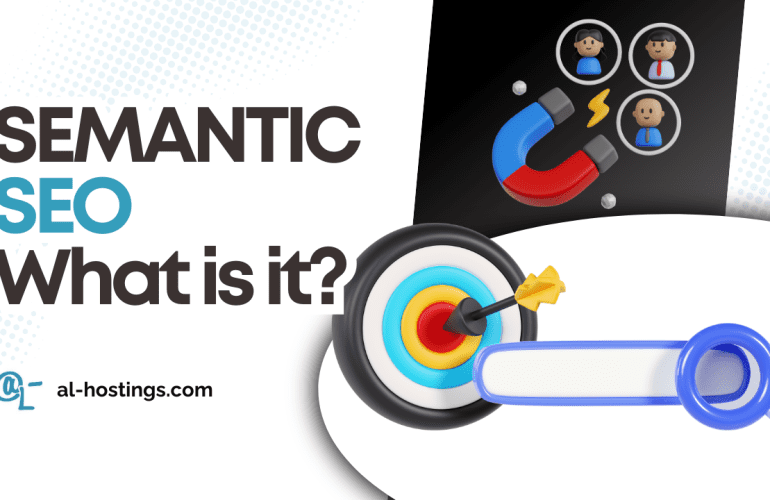In SEO, evolution is constant, and every year brings with it new challenges and opportunities. For SEO in 2024, one of the most significant transformations we are seeing is the shift in focus from keyword SEO optimization to a more value optimization strategy. This shift responds to the need to offer more relevant and useful content for users, adapting to an ever-changing digital environment.
What is SEO Keyword Optimization?
Traditionally, before 2024, SEO has focused on keyword optimization, which involves selecting specific terms that users search for and optimizing content around those terms. This included practices such as:
- Keyword research: Identifying the most relevant, high-volume search terms.
- On-page optimization: Including keywords in titles, meta descriptions, headings, and content.
- Link building: Increasing website authority through quality backlinks.
While these tactics are still important, it has become clear that focusing exclusively on keywords can be limiting.
The Transition to Value Optimization
Value optimization emphasizes creating content and experiences that provide real value to users. This approach recognizes that while keywords are important, even more so is intent and the quality of the user experience. Search engines like Google have evolved to better understand the context and intent behind search queries, leading to a more sophisticated approach to evaluating content.
What does Value SEO Optimization entail?
- Understanding user intent: It’s no longer just about specific keywords, but understanding why users search for certain terms and what information or solutions they’re looking for.
- Creating useful and relevant content: Search engine algorithms now favor content that fully and accurately answers users’ questions. This includes detailed guides, tutorials, case studies, and more.
- User experience (UX): Page loading speed, intuitive navigation, and an attractive design are crucial factors. A good user experience can improve dwell time and reduce bounce rate, signals that search engines use to evaluate the quality of a site.
- E-A-T (Expertise, Authoritativeness, Trustworthiness): Expertise, authority, and trustworthiness have become essential. Search engines value content that is created by experts and comes from trusted sources.
- Multimedia content and varied formats: Incorporating videos, infographics, podcasts, and other formats can enrich the user experience and satisfy various content consumption preferences.
Benefits of Value SEO Optimization
- Better alignment with modern search algorithms: With search engines becoming more sophisticated, focusing on user value and intent is crucial to achieving good rankings.
- Increased user engagement and loyalty: By providing valuable content, users are more inclined to interact and return, which can result in increased brand loyalty.
- Building a strong reputation: By focusing on quality and trustworthiness, companies can establish themselves as thought leaders in their industry.
Examples of How to Implement Value SEO Optimization
Value optimization focuses on providing a comprehensive experience that not only attracts visitors to a website but also retains them and offers a solution to their needs. Here are some practical examples of how to implement value optimization in an SEO strategy for 2024:
1. Educational Content and Detailed Guides
Instead of focusing only on short articles stuffed with keywords, a good value optimization strategy can include:
- Comprehensive guides and tutorials: Create long-form content that covers a topic in depth. For example, a software company could offer a comprehensive guide on “How to Choose the Best Project Management Software,” explaining different features, use cases, and comparisons between various options.
- Articles Based on Case Studies: Showing real-life examples of how your products or services have helped previous customers can be very valuable to potential users.
2. Optimizing for User Intent
- Search Intent Analysis: Instead of simply targeting keywords like “buy shoes,” it’s important to understand what type of shoes users are searching for—whether they’re interested in reviews, price comparison, or fashion. Creating content that fits these specific needs, such as “Best Running Shoes for Beginners” or “Shoe Trends Guide for 2024,” better addresses search intent.
3. Improved User Experience (UX)
- Page speed optimization: Ensuring that pages load quickly is crucial. This includes compressing images, using lazy loading techniques, and minimizing the use of heavy scripts.
- Clear and intuitive navigation: Organize content so that it is easy to find and explore. An e-commerce website, for example, can improve UX through clear product categorization, effective search filters, and a streamlined checkout process.
4. Multimedia and Various Formats
- Videos and Webinars: Including explanatory videos or tutorials can increase engagement. For example, a landscaping company could create videos on “How to Plant a Sustainable Garden.”
- Infographics and Visual Content: Infographics can simplify complex information and make it more digestible. For example, a health company could use infographics to explain the metabolism process.
5. Incorporating E-A-T Elements
- Showing Authors’ Expertise and Credentials: On blogs or specialized content sites, displaying authors’ credentials can increase user trust. For example, a health blog can highlight that its articles are written by doctors or health experts.
- Links to trusted sources: Referencing studies, statistics, or quotes from recognized experts can reinforce the authority and trustworthiness of the content.
6. User Interaction and Engagement
- Forums and Q&A sections: Allow users to interact with each other and with experts on the site. For example, a technology site can include a Q&A section where users can resolve queries about new devices.
- Personalized newsletters: Offer users the option to subscribe to personalized newsletters based on their interests. This not only retains users but also provides relevant and timely content.
7. Mobile Optimization
- Responsive Design: Ensuring that the website is accessible and easy to use on mobile devices. This includes an adaptive design, large touch buttons, and simplified navigation.
SEO Changes in 2024: Conclusion
SEO in 2024 is evolving towards a more user-centric approach, where keyword optimization alone is no longer enough. The key to success lies in understanding and meeting the needs and expectations of users, offering high-value content that not only answers their queries but also improves their online experience. For businesses and marketing professionals, adapting to this new reality is essential to stay competitive and relevant in today’s digital landscape.
We help you with your SEO optimization:
Professional WordPress Consulting

WordPress Expert, SEO & UX Optimization | I help freelancers and SMEs grow their business. | Web Design and Development Specialist for Startups, SMEs, and Personal Projects




